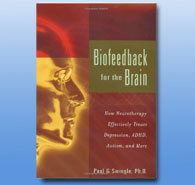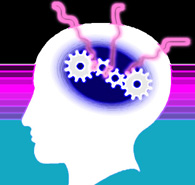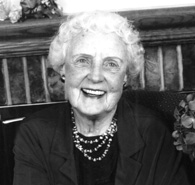by Siegfried Othmer | August 5th, 2008
 So pronounces the headline in the Los Angeles Times. Needed are allied health professionals, those of lesser credentials who nevertheless are crucial to the medical enterprise. Involved here are some two hundred occupations ranging from respiratory care practitioners to radiographers to paper pushers. These allied professionals make up some 60% of the labor pool in the health care system. The greatest projected need appears to be among pharmacy techs, dental hygienists, and physical therapy assistants.
So pronounces the headline in the Los Angeles Times. Needed are allied health professionals, those of lesser credentials who nevertheless are crucial to the medical enterprise. Involved here are some two hundred occupations ranging from respiratory care practitioners to radiographers to paper pushers. These allied professionals make up some 60% of the labor pool in the health care system. The greatest projected need appears to be among pharmacy techs, dental hygienists, and physical therapy assistants.
The author obviously doesn’t know about neurofeedback yet. It is worth remarking that in our experience we are taking part in the growth curve of health care rather than being caught up in the impending recession. Neurofeedback clinics are busier than ever before. Inquiries are ramping up. The services we offer are not optional for many people, and that factor will dominate in our growth as skepticism regarding neurofeedback is increasingly discredited. More professionals are moving from mere curiosity to active involvement with neurofeedback.
In various ways neurofeedback is appearing on the scene as a “just-in-time” modality. Our society will undergo enormous stresses in coming years as the hangover from our orgy of fiscal excess is overcome. The growing problem of mental dysfunction in the elderly combines with burgeoning issue of educational failure among the young to present a significant challenge to our society for which the neuromodulation technologies in general, and neurofeedback in particular, present the only viable remedy currently available. And in the middle age range we have the returning veterans and the generally stressed-out middle class, for whom neurofeedback also presents a reprieve. Read More »
Posted in Uncategorized | No Comments »
by Siegfried Othmer | July 31st, 2008
Two powerful individuals are combining their efforts and resources in a renewed campaign against the scourge of tobacco: Bill Gates and Michael Bloomberg, mayor of New York City. Despite best efforts to date to change behavior, about one billion people still smoke; half die prematurely from smoking-related causes; and the typical loss of life expectancy ranges from ten to fifteen years (The Economist, July 26th issue, p. 70). Ironically, Philip Morris had it right when they made the case in the Czech Republic years ago that smoking actually reduced the costs of providing social security because it conveniently caused people to die sooner.
What may make the difference this time, suggests the Economist newspaper, is that Gates and Bloomberg come with money, methods, and motivation. When it comes to methods, however, the plan is to be receptive to a wide variety of initiatives that have promise rather than funneling efforts into a pre-ordained program. That offers an opening for neurofeedback.
Neurofeedback has something unique to offer when it comes to smoking. As we have said for some years now, it is a mistake to campaign against smoking merely because of the long-term impacts when there are so many obvious near-term benefits. The human operating system responds much more effectively to short-term rewards than to vague long-term disincentives. Willpower is enormously over-rated when it comes to fighting a reward system that is largely mechanized subconsciously. Read More »
Posted in Uncategorized | 1 Comment »
by Siegfried Othmer | July 31st, 2008

The Lupus Foundation is one of a number of organizations concerned about the phase-out of incandescent light bulbs in favor of compact fluorescents (CFLs) in the wake of the Energy Independence and Security Act of 2007 that mandates higher lighting efficiency to be met by 2012-14. The new standard is a conversion efficiency of 70%.
The concern, apparently, is that UVB radiation from CFLs may cause photosensitivity in people with lupus and other conditions. Other organizations that are concerned about this issue include Sjogren’s Syndrome Foundation, National Psoriasis Foundation, and the Epilepsy Foundation.
I believe this concern to be misguided. The problem most likely relates to the frequency characteristics of the fluorescent illumination, not to the UVB radiation. The effects, after all, can be turned on and off with the lights, which places suspicion on the direct effects of the modulated signal on our brain activity. Any supposed physiological effect of the UVB radiation would be expected to persist. Read More »
Posted in Uncategorized | 5 Comments »
by Siegfried Othmer | July 15th, 2008
 I was delighted to be able to review this book prior to its recent publication. It is one of the few in recent times to introduce the public to neurofeedback / EEG biofeedback. Paul Swingle is a seasoned biofeedback practitioner, well-known within the field through conferences and workshops. Swingle was for many years the coordinator of psychophysiology services at Boston’s McLean Hospital, and lecturer in psychiatry at Harvard. He is currently active in private practice in Vancouver, Canada. This is the first time that his somewhat eclectic approach has been thoroughly described within one accessible resource.
I was delighted to be able to review this book prior to its recent publication. It is one of the few in recent times to introduce the public to neurofeedback / EEG biofeedback. Paul Swingle is a seasoned biofeedback practitioner, well-known within the field through conferences and workshops. Swingle was for many years the coordinator of psychophysiology services at Boston’s McLean Hospital, and lecturer in psychiatry at Harvard. He is currently active in private practice in Vancouver, Canada. This is the first time that his somewhat eclectic approach has been thoroughly described within one accessible resource.
The book will appeal to both mental health professionals and to the interested public. Health professionals will find it a useful introduction to how Swingle works with clients using both neurofeedback and complementary modalities. Its main appeal will be to parents and to other potential clients. Swingle proceeds with a focus on Attention Deficit Hyperactivity Disorder, even though he largely downplays the issue of diagnosis. ADHD has become a common label that is being applied to a heterogeneous spectrum of conditions. By now it is setting the terms of discourse for everyone. The book will nevertheless be sought out by parents with a variety of other behavioral, attentional, and learning issues with their children. Read More »
Posted in Uncategorized | No Comments »
by Siegfried Othmer | July 4th, 2008
Untitled Document
 The seemingly never-ending controversy about the validity of QEEG discriminant functions came up again recently, this time in connection with traumatic brain injury. If a TBI discriminant function is to have validity, then the problem of false negatives and false positives better be a small one. But when it comes to traumatic brain injury, how do we ever know whether a case assigned to the bin of false positives is anything of the kind? Perhaps we are dealing with a case where traumatic brain injury occurred but was not registered as such. Birth injury is a case in point.
The seemingly never-ending controversy about the validity of QEEG discriminant functions came up again recently, this time in connection with traumatic brain injury. If a TBI discriminant function is to have validity, then the problem of false negatives and false positives better be a small one. But when it comes to traumatic brain injury, how do we ever know whether a case assigned to the bin of false positives is anything of the kind? Perhaps we are dealing with a case where traumatic brain injury occurred but was not registered as such. Birth injury is a case in point.
Then there is the matter of false negatives. Those who have worked with minor traumatic brain injury over the years are aware that symptom severity does not match up well against the apparent severity of the insult. Even apparently minor whiplash in a low-speed fender bender can leave someone dysfunctional. One of my favorite cases along these lines involves an attorney whose job it was to discredit head injury cases before juries on behalf of his employer, an insurance company. While he was out at a restaurant he visited the men’s room just as the light bulb burned out there and left him in the dark. He thought he knew his way around, but ended up hitting his head on a stall partition. He returned to the table, finished his dinner with his guests, and got back home safely. But he never worked again (until he had done some neurofeedback later). He could no longer organize and plan his work. His edge as a trial attorney was gone. He realized that he was suffering all of the symptoms that he had been ridiculing and diminishing in court for all these years. Suddenly head injury was only too real for him. Read More »
Posted in Uncategorized | 4 Comments »
by Siegfried Othmer | July 2nd, 2008
Untitled Document
 The death of Edwina Froehlich on June 8 brought the La Leche League back into the news. Froehlich had been one of the founders of the group, and the organization was run out of her home for years. It occurred to me on reading her obituary that this group’s experience had some elements in common with ours in biofeedback, and their success may even have laid the groundwork for our success decades later.
The death of Edwina Froehlich on June 8 brought the La Leche League back into the news. Froehlich had been one of the founders of the group, and the organization was run out of her home for years. It occurred to me on reading her obituary that this group’s experience had some elements in common with ours in biofeedback, and their success may even have laid the groundwork for our success decades later.
The climate of the day, back in 1956, was of an onrush of modernism that needed to be embraced. Doctors were among the many who were pointing the way to the future. It was not difficult to pitch infant formula as part of that liberating modernism, with the suggestion that it was even superior to mother’s milk. Those who resisted these trends were easily dismissed as old-fashioned and radical to boot. It was not a radical age, despite the fact that radical change was happening. Read More »
Posted in Uncategorized | No Comments »
 So pronounces the headline in the Los Angeles Times. Needed are allied health professionals, those of lesser credentials who nevertheless are crucial to the medical enterprise. Involved here are some two hundred occupations ranging from respiratory care practitioners to radiographers to paper pushers. These allied professionals make up some 60% of the labor pool in the health care system. The greatest projected need appears to be among pharmacy techs, dental hygienists, and physical therapy assistants.
So pronounces the headline in the Los Angeles Times. Needed are allied health professionals, those of lesser credentials who nevertheless are crucial to the medical enterprise. Involved here are some two hundred occupations ranging from respiratory care practitioners to radiographers to paper pushers. These allied professionals make up some 60% of the labor pool in the health care system. The greatest projected need appears to be among pharmacy techs, dental hygienists, and physical therapy assistants.






 I was delighted to be able to review this book prior to its recent publication. It is one of the few in recent times to introduce the public to
I was delighted to be able to review this book prior to its recent publication. It is one of the few in recent times to introduce the public to  The seemingly never-ending controversy about the validity of QEEG discriminant functions came up again recently, this time in connection with traumatic brain injury. If a TBI discriminant function is to have validity, then the problem of false negatives and false positives better be a small one. But when it comes to traumatic brain injury, how do we ever know whether a case assigned to the bin of false positives is anything of the kind? Perhaps we are dealing with a case where traumatic brain injury occurred but was not registered as such. Birth injury is a case in point.
The seemingly never-ending controversy about the validity of QEEG discriminant functions came up again recently, this time in connection with traumatic brain injury. If a TBI discriminant function is to have validity, then the problem of false negatives and false positives better be a small one. But when it comes to traumatic brain injury, how do we ever know whether a case assigned to the bin of false positives is anything of the kind? Perhaps we are dealing with a case where traumatic brain injury occurred but was not registered as such. Birth injury is a case in point. The death of
The death of